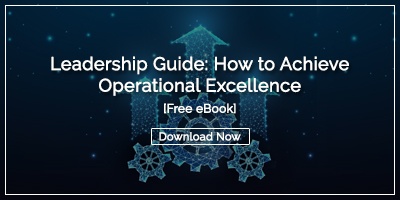"Operational excellence begins with having the right strategy, but it's realized through relentless focus on execution and continuous improvement."
Jeff Bezos - Amazon
 Operational excellence is crucial for business leaders aiming for continuous improvement because it establishes a framework for consistently delivering high-quality products and services while optimizing processes and reducing waste. By focusing on operational excellence, leaders can create a culture of efficiency and innovation, enabling their organizations to adapt quickly to market changes and customer demands. This enhances competitiveness and fosters a proactive environment where continuous improvement is ingrained in daily operations. As a result, companies can achieve sustainable growth, improved customer satisfaction, and long-term success.
Operational excellence is crucial for business leaders aiming for continuous improvement because it establishes a framework for consistently delivering high-quality products and services while optimizing processes and reducing waste. By focusing on operational excellence, leaders can create a culture of efficiency and innovation, enabling their organizations to adapt quickly to market changes and customer demands. This enhances competitiveness and fosters a proactive environment where continuous improvement is ingrained in daily operations. As a result, companies can achieve sustainable growth, improved customer satisfaction, and long-term success.
The optimal operational excellence model integrates vital principles such as lean management, Six Sigma, and total quality management to create a comprehensive approach to improving organizational efficiency and effectiveness. This model emphasizes eliminating waste, reducing variability, and enhancing quality across all business processes.
This post will detail an optimal operational excellence model and framework for businesses and introduce the tools and methods designed to support and sustain it.
Core Components of an Operational Excellence Model
Although the specific tools and techniques used to achieve operational excellence vary from organization to organization, there are a few critical elements that almost all operationally excellent businesses have in common.
The role of leadership in driving operational excellence
Leadership is pivotal in driving operational excellence by setting a clear vision, establishing strategic goals, and fostering a culture of continuous improvement. Effective leaders inspire and empower their teams, ensuring alignment and commitment to organizational objectives. They facilitate open communication, provide the necessary resources, and remove obstacles that hinder progress. By modeling operational excellence behaviors and holding themselves and others accountable, leaders create an environment where high performance and innovation thrive, ultimately leading to sustained success and competitive advantage.
Importance of involving employees at all levels
Operationally excellent organizations must involve employees at all levels because their engagement and insights are crucial for identifying inefficiencies and driving improvements. When employees are empowered to contribute, they are more motivated and take ownership of their work, leading to higher productivity and innovation. This inclusive approach ensures that diverse perspectives are considered, fostering a culture of continuous improvement and collaboration. Organizations can more effectively address challenges, implement sustainable changes, and achieve long-term success by involving everyone.
Techniques for streamlining processes and eliminating waste
Techniques for streamlining processes and eliminating waste include lean methodologies, Six Sigma, and value stream mapping. Lean methodologies focus on removing non-value-added activities, reducing cycle times, and improving workflow efficiency. Six Sigma employs data-driven approaches and statistical analysis to minimize defects and variability, ensuring high-quality outputs. Value stream mapping visualizes the entire production process, identifying bottlenecks and opportunities for improvement. Additionally, continuous improvement practices such as Kaizen encourage incremental changes and employee involvement in problem-solving. By implementing these techniques, organizations can enhance operational efficiency, reduce costs, and increase overall productivity.
Leveraging technology to enhance operations
Leveraging technology to enhance operations involves utilizing advanced tools and systems such as automation, artificial intelligence (AI), and data analytics to streamline processes and improve efficiency. Automation can handle repetitive tasks, reducing human error and freeing employees for more strategic activities. AI and machine learning can provide predictive insights, optimize decision-making, and enable proactive maintenance. Data analytics helps organizations gain valuable insights into their operations, identifying trends and areas for improvement. By integrating these technologies, businesses can enhance accuracy, speed, and agility in their operations, leading to increased productivity and a competitive edge in the market.
Fostering a culture that supports ongoing improvement efforts
Fostering a culture that supports ongoing improvement efforts involves creating an environment where continuous learning, innovation, and collaboration are encouraged and rewarded. Leaders play a crucial role in setting the tone by promoting transparency, open communication, and a willingness to experiment and take calculated risks. Recognizing and celebrating small wins, as well as learning from failures, helps to build momentum and maintain enthusiasm for improvement initiatives. Regular training and development opportunities empower employees with the skills and knowledge needed to contribute effectively. By embedding these values into the organization's DNA, companies can sustain long-term growth and adaptability in a rapidly changing business landscape.
Building the Framework for Operational Excellence
Once these fundamental operational excellence principles are realized, organizations can begin setting up the structure for long-term sustainable success.
Methods for evaluating current performance and setting benchmarks.
Three popular methods for evaluating current performance and setting benchmarks include:
Key Performance Indicators (KPIs): KPIs are quantifiable metrics that measure the performance of various aspects of an organization's operations. They help assess current performance against predetermined goals and benchmarks, clearly indicating where improvements are needed.
Benchmarking: Benchmarking involves comparing organizational processes, practices, and performance metrics against industry best practices or competitors. It helps identify areas where the organization lags or excels, providing insights into potential areas for improvement concerning business outcomes.
Balanced Scorecard: The Balanced Scorecard is a strategic management tool that aligns an organization's activities with its vision and strategy. It uses financial and non-financial metrics across four perspectives—financial, customer, internal processes, and learning and growth—to evaluate current performance and set benchmarks for future performance improvements.

Strategic Planning and Goal Setting
Developing a strategic plan that aligns with operational excellence goals involves several key steps:
Define Vision and Mission: Clarify the organization's vision (long-term goal) and mission (purpose). These statements should be clear, concise, and aligned with operational excellent principles.
Conduct SWOT Analysis: Assess the organization's strengths, weaknesses, opportunities, and threats (SWOT). Identify internal capabilities and external factors that could impact operational excellence efforts.
Set SMART Goals: Establish Specific, Measurable, Achievable, Relevant, and Time-bound (SMART) goals that support operational excellence. These goals should be aligned with the organization's vision and address areas identified in the SWOT analysis.
Process Mapping and Analysis
Once the goals are clearly defined, the organization can begin to deploy the strategy using these and other process improvement techniques.
Develop Strategies and Tactics: Create strategies and tactics to achieve the SMART goals. Strategies should outline broad approaches, while tactics provide specific actions and steps to implement the strategies effectively.
Allocate Resources: Determine the financial, human, and technological resources required to support the strategic initiatives to achieve operational excellence.
Map the value stream: Value stream mapping is a visual tool for analyzing and improving the flow of materials and information required to deliver a product or service to customers. It helps organizations identify waste, streamline processes, and enhance overall efficiency by mapping out the current state and designing future-state processes.
Implement and Monitor Progress: Execute the strategic plan and monitor progress regularly. Adjust strategies and tactics as needed based on performance metrics and feedback.
Performance Measurement and Metrics
While every organization will have its own standards, five common key performance indicators for operational excellence methodologies include:
Overall Equipment Effectiveness (OEE): Measures the efficiency of manufacturing processes by combining availability, performance, and quality metrics to assess equipment utilization and downtime.
Cycle Time: Tracks the time it takes to complete a process or task, highlighting opportunities for reducing lead times and improving operational efficiency.
Customer Satisfaction Score (CSAT): This score gauges customer satisfaction levels through surveys or feedback mechanisms, indicating how well operational processes meet customer expectations.
First-time quality (FTQ) Measures the percentage of products or services that meet quality standards upon initial inspection or delivery, reflecting operational excellence in maintaining high-quality outputs.
Employee Engagement Score: This score assesses the level of commitment and motivation among employees. Engaged teams are more likely to contribute to operational improvements and drive overall excellence.
Mechanisms for gathering feedback and making necessary adjustments.
Operational excellence organizations commonly use several mechanisms for gathering feedback and making necessary adjustments:
Customer Feedback Systems: Implementing surveys, feedback forms, and customer satisfaction scores to collect insights directly from customers about their experiences and expectations.
Employee Feedback and Suggestions: Establish channels for employees to provide feedback on operational processes, challenges, and improvement ideas, such as improvement management software, regular meetings, or one-on-one conversations.
Performance Reviews and Metrics: Monitoring key performance indicators and conducting regular performance reviews to assess operational effectiveness and identify areas needing adjustment.
Continuous Improvement Programs: Engaging employees in Kaizen events, Six Sigma projects, or Lean initiatives focusing on incremental improvements based on data-driven insights and feedback.
Benchmarking and Best Practices: Comparing operational metrics and practices with industry benchmarks or best-in-class organizations to identify opportunities for improvement and implement necessary adjustments.
By leveraging these mechanisms, operationally excellent organizations can gather diverse perspectives, identify inefficiencies, and continuously refine their processes to achieve and maintain high levels of performance and efficiency.
Conclusion
The Optimal Operational Excellence Model integrates principles from lean management, Six Sigma, and total quality management to create a comprehensive framework for achieving superior operational performance. By focusing on eliminating waste, reducing variability, and enhancing overall efficiency across processes, this model aims to streamline operations and improve quality consistently. Embrace operational excellence as the cornerstone of your organization's future success—begin today by fostering a culture of continuous improvement, empowering your teams, and optimizing your processes to achieve excellence in every aspect of your operations.
To learn more, we recommend:
"The Toyota Way: 14 Management Principles from the World's Greatest Manufacturer" by Jeffrey K. Liker
"Lean Thinking: Banish Waste and Create Wealth in Your Corporation" by James P. Womack and Daniel T. Jones
"The Goal: A Process of Ongoing Improvement" by Eliyahu M. Goldratt and Jeff Cox
"Measures of Success: React Less, Lead Better, Improve More" by Mark Graban
As always, our team is standing by to chat about how KaiNexus might be able to support your team as you work toward developing your operational excellence management system.




Add a Comment